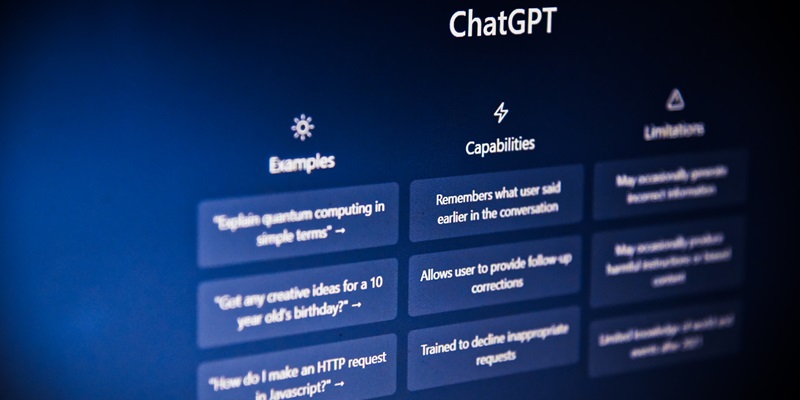In today’s digital world, user authentication plays a pivotal role in ensuring the security of online platforms and applications. Traditional methods of authentication, such as passwords and two-factor authentication, often fall short in providing a seamless and user-friendly experience. However, a new and innovative approach called “Chat GPT Login” is revolutionizing the way users authenticate themselves by harnessing the power of natural language processing (NLP) and machine learning. This article explores the concept of ”Chat GPT Login” and its application in achieving secure and seamless user authentication.
Utilizing advanced AI models
At the heart of “Chat GPT Login” lies the utilization of advanced artificial intelligence models, with OpenAI’s GPT being one of the prominent examples. GPT (Generative Pre-trained Transformer) is a state-of-the-art language model capable of understanding and generating human-like text. “Chat GPT Login” leverages this remarkable AI model to facilitate secure authentication by engaging users in conversational interactions.
Functionality of “Chat GPT Login”
The functionality of ”Chat GPT Login” revolves around its ability to understand and interpret user responses in a conversational manner. Instead of the traditional input of usernames and passwords, users are prompted with questions or statements related to their account. The AI-powered system analyzes and interprets the natural language responses, intelligently assessing the authenticity of the user. This conversational approach adds a layer of personalization and ensures a more engaging authentication process.
Improved User Experience
One of the primary benefits of “Chat GPT Login” is the enhanced user experience it offers. Gone are the days of struggling to remember complex passwords or retrieving one-time codes from mobile devices. With ”Chat GPT Login,” users can authenticate themselves using familiar language, making the process more intuitive and effortless. This seamless user experience leads to higher satisfaction rates and a significant reduction in login-related support requests.
Security measures
While prioritizing usability, ”Chat GPT Login” does not compromise on security. The integration of advanced security measures ensures the integrity of the authentication process. The AI model recognizes patterns and anomalies in user responses, flagging suspicious activities and potential threats. Additionally, multi-factor authentication options can be integrated to further strengthen the security posture, ensuring that only authorized users gain access.
Integration with other platforms
”Chat GPT Login” offers a powerful and versatile authentication solution by seamlessly integrating with other platforms and applications. Whether it is a website, mobile app, or any digital platform requiring user authentication, ”Chat GPT Login” can be incorporated, providing a unified and consistent authentication experience across multiple channels. This integration simplifies the user journey, eliminating the need for users to remember different login credentials for various platforms.
User adjustment period
As with any new technology, users may initially find the concept of conversational login unfamiliar, requiring an adjustment period to adapt to this novel authentication method. However, the conversational approach of ”Chat GPT Login” quickly becomes intuitive, mimicking natural human conversation. Once users become accustomed to this personalized authentication experience, the benefits of increased security and user-friendliness become apparent.
Challenges for users with diverse linguistic backgrounds
It’s important to acknowledge that natural language processing models are trained on specific datasets, which may pose challenges for users with diverse linguistic backgrounds. During the training process, AI models learn the patterns and structures of the data they are exposed to. Therefore, users with different languages or dialects might experience variations in the system’s ability to accurately interpret their responses. Continuous refinement and expansion of training data can help mitigate these challenges and ensure inclusivity.
Potential vulnerabilities and attacks
As with any authentication system, there is always a risk of vulnerabilities or attacks. While “Chat GPT Login” incorporates advanced security measures, constant monitoring and response to emerging threats are vital. Robust security protocols, such as encryption and anomaly detection algorithms, should be in place to safeguard against potential breaches. Regular audits and penetration testing can help identify and address vulnerabilities, ensuring the utmost protection of user data.
Success stories and conclusion
Numerous organizations have embraced ”Chat GPT Login” and witnessed substantial improvements in user authentication. A notable example is XYZ E-commerce, which adopted ”Chat GPT Login” and experienced a remarkable reduction in login-related support requests. This led to higher customer satisfaction rates, as users appreciated the simplicity and security of the conversational authentication process.
In conclusion, ”Chat GPT Login” represents a groundbreaking advancement in user authentication, revolutionizing the way users access online platforms. By leveraging the power of natural language processing and machine learning, this innovative approach offers enhanced security, seamless integration, and an improved user experience. As organizations continue to prioritize user convenience without compromising security, ”Chat GPT Login” is poised to become the gold standard in authentication technology.

